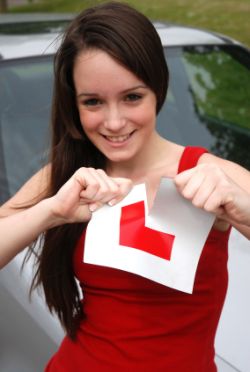Your car and the lights on it
We are all used to seeing cars in the dark, and also seeing their indicators in the day to communicate to other car drivers. But what must you ensure with regard to the lighting of your car?
Most people don't give this much thought, but of course there are lights that must be fitted to a vehicle in order to comply with the legislation and regulations of the land.
It is the responsibility of the driver of the vehicle to ensure that their lights are both present and in correct working order, and they will be committing an offence if this is not the case.
You must have two headlamps, two sidelamps, two rear lights, a number plate lamp, two red reflectors at the rear, flashing direction indicators at the front and the rear, rear stop lamps and also rear fog lamps.
So you can see that there are actually quite a few lights that you require. You should check these periodically for your own safety anyhow.
It can be difficult to know if an indicator bulb has gone for instance, so all you need to do is get a friend or family member to walk around the car as you try the various lights and let you know if anything isn't working: a broken indicator bulb for instance can cause real confusion to other road drivers who won't be expecting your manouevres as they won't be able to see which way you are indicating if the bulb is broken and therefore should be replaced immediately.
Related Articles...
The day of the theory test
On the day of the theory test you may well feel nervous. As with any test or examination of any kind this is of course natural as everybody is anxious to do their best and to pass the...
What to do when you sell a vehicle
When you sell a vehicle, there are some things that you have to do straight away. As soon as the vehicle is sold you have to tell the DVLA, which stands for the Driver and Vehicle Licensing Agency,...
What to do at a ford
This article is about driving through a ford, not about driving a Ford car.
When you see a warning sign for a ford you should naturally slow down. Then look at the ford and assess the depth...
Why new drivers are more likely to be involved in an accident
It is a well known statistic that new drivers are more likely to be involved in accidents, and indeed insurance companies definitely know this as you'll see by comparing premiums as a new driver...
Risks when driving: bright or low sun
When the sun is low and bright, it can be very hard indeed to drive. This is because we may have to squint and the bright light can make it hard to pick out objects and to see, sometimes right in...
Typical brake faults outlined
The brakes are a mechanical object and so it is possible that they will develop problems and not function the way that they should be. This is clearly very dangerous because brakes are one of the...
Switching to driving an automatic
When you switch to an automatic car it could be for a wide range of reasons. Of course number one on that list could be that you are simply given an automatic car or you are driving in a country...
The ABC of dealing with casualties
The ABC refers to how to treat casualties if you are involved in an accident but not injured, or indeed if you are at the scene where an accident occurs.
The A refers to the word airway. This...
Some common engine faults
It is beyond the scope of the articles here to go into detail about how the engine works and what the various parts of it are. For the theory test you won't need to know a great detail about the...
Driving Test and Independent Driving
Independent driving - where the candidate is not following the directions given at each stage by the instructor but rather following a route, e.g. following road signs to Town X until the instructor...
Back to home page of driving theory test questions

